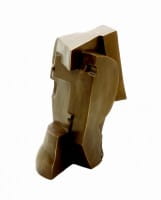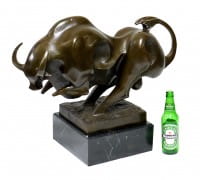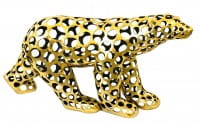Bring Your Garden to Life with Exquisite Garden Statues and Outdoor Sculptures
Transform your outdoor space into a personal sanctuary with our wide selection of garden statues, garden sculptures, and decorative figurines. Whether you're creating a tranquil Zen garden, a romantic European courtyard, or a playful backyard retreat, our sculptures provide the perfect finishing touch to elevate your garden decor.
Our collection offers something for every taste and setting — from elegant tall garden statues that command attention, to smaller figurines that subtly enhance flower beds and hidden corners. These carefully crafted pieces help define outdoor spaces, create focal points, and bring a sense of artistry and intention to your landscape design.
A Style for Every Garden
Our garden statues range from traditional to contemporary. Choose from classical Greco-Roman figures, serene Buddha statues, charming woodland animals, or modern abstract forms. Looking to add whimsy or spirituality? Explore our angel statues, fairy figurines, and sacred symbols that invite a sense of wonder and serenity into your garden.
For those with larger spaces or formal layouts, our tall garden statues are perfect for framing entrances, lining pathways, or standing as proud centerpieces in open green areas. Their height and detail add dramatic flair and architectural balance to any landscape.
Quality Materials Made to Endure
Crafted from durable materials such as cast stone, bronze, resin, concrete, and metal, our garden sculptures are designed to withstand the elements while retaining their beauty over time. Many of our statues develop a natural patina, adding to their character as the years go by.
Whether you're searching for something rustic and weathered or smooth and polished, you'll find garden statues for sale that fit your design vision and environmental needs. Each piece is selected for both artistic value and outdoor resilience, ensuring long-lasting enjoyment and visual impact.
From Statement Pieces to Subtle Details
While large and tall garden statues make bold statements, our smaller figurines add delicate charm and personality. Tuck a rabbit under a shrub, place a meditating figure beside a water feature, or let a bird sculpture rest quietly on a garden wall. These details draw visitors in, inviting them to explore and engage with the space.
We also offer themed collections tailored to specific aesthetics — from Japanese-inspired serenity to French countryside romance, rustic farm themes, and modern minimalist looks.
Perfect for All Garden Types
No matter the size or style of your outdoor space — be it a sprawling estate, cozy urban patio, rooftop terrace, or community garden — the right garden sculptures can completely transform the atmosphere. They can symbolize personal values, tell a story, or simply bring joy to everyday moments spent outdoors.
Explore Our Garden Statues for Sale Today
Whether you're starting fresh or looking to enhance an established outdoor area, our wide range of garden statues for sale has something for everyone. Let art and nature merge to create a space that reflects your personality and brings beauty year-round.
Browse our curated selection of garden statues, figurines, and tall garden statues to find the perfect pieces that will turn your garden into a work of living art.





























